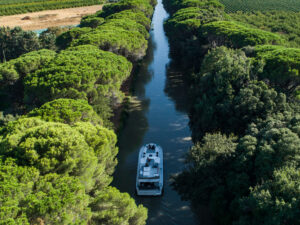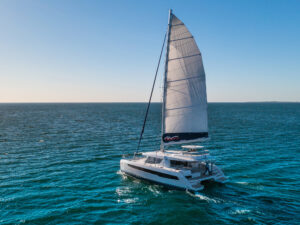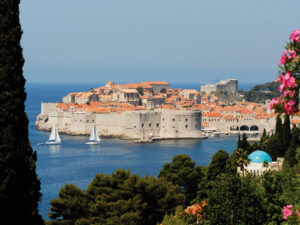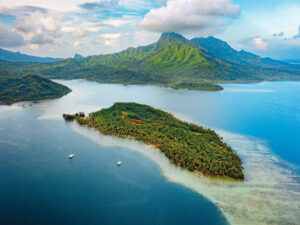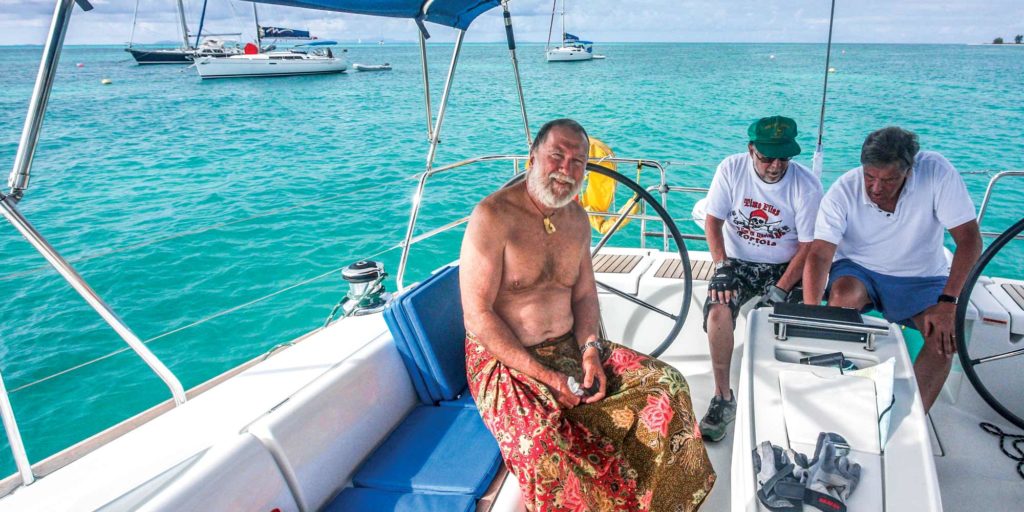
To the uninitiated, chartering can seem expensive, complicated and confusing. It’s not. In fact, it can be surprisingly affordable for families, yacht-club groups, corporate get-togethers, motivational seminars, etc. The main reason it seems complicated is because there are as many reasons to charter as there are boats and skippers.
One thing to bear in mind is that you are buying an experience, not merely renting a boat. So, let’s see if we can demystify chartering in terms everyone can understand.
The two main divisions of yacht chartering are bareboat and fully crewed.
A bareboat charter is exactly like renting a car. They toss you the keys. This gives you maximum freedom, and maximum responsibility as well. In essence, the bareboat you rent is your private yacht for the duration, with all the advantages and limitations that entails.
Chartering a fully crewed craft is more like renting a limo. It comes with a driver who does all the work and takes care of all the transportation, navigation and safety details. All you have to do is lie around and be catered to; the crew attends to that. You have the world’s smallest, most luxurious, most mobile seaside resort entirely at your beck and call.
Think of it this way: You can have your limo pull up before your destination and circle while you party ashore. On a bareboat, you cannot. Every bareboat has a skipper who has signed on the dotted line that they will return the boat as received. And he or she must be directly responsible, 24/7, for doing so.
If you’re interested in fully crewed chartering, you either have to go with an experienced friend’s suggestion (chancy) or use the services of a professional charter broker. Good brokers don’t merely match customers to boats, they match crews and customers as well. A family of Mormons, a group of cruising couples or some vacationing friends of Bill (Alcoholics Anonymous members) all require a different package than, say, a group of West Coast rappers with an emerging interest in watersports.
Many established brokers don’t allow a client to charter with a skipper or crew they haven’t personally met both professionally and socially, so charter customers and skipper are compatible while underway.
Makes sense, doesn’t it?
Our main focus for the readers of Cruising World is on bareboats, for the simple reason they allow our sailing readers maximum freedom at minimal expense to enjoy exactly the sailing-style vacation they desire.
Are there other variations? Sure. You can bareboat with a liveaboard captain or “adviser” to help you with the ropes and nav work. (But never forget the toss-you-the-keys aspect of bareboating. You temporarily have all the rights and privileges of a yacht owner for the duration of the charter. Thus, if your adviser tells you to sail into some rocks and you do, the courts only see that you’ve sailed into some rocks. They don’t care who was bending your ear at the time.)
Or you could charter a fully outfitted racing yacht with the pre-negotiated understanding that you and your hometown racing crew will be using the trip to sharpen your racing skills.
The Bitter End Yacht Club in the British Virgin Islands’ North Sound used to offer part-hotel and part-bareboat stays. They catered both to cruisers (Anegada, anyone?) and club racers with entirely different packages. There are also fully crewed so-called “head” boats that will book singles or couples by the cabin to form a larger group — with mixed results.
Or, if you already have a boatload of eager crew but aren’t sure you’re ready to tackle unfamiliar terrain, you and your friends can embark on one of the many flotillas available. You’ll follow a lead boat and have an experienced captain nearby to answer any questions, but you can still get away on your own at times if you like.
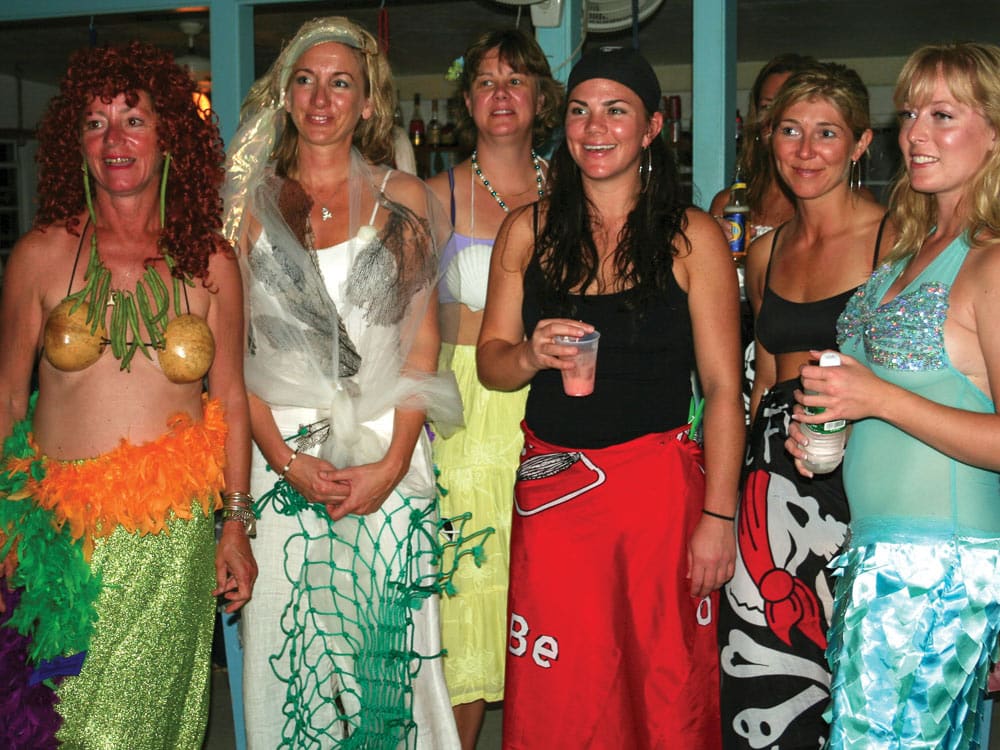
And there are many learn-to-sail charters, including those that issue bareboat certifications. (I’d recommend one that provides a certified instructor and established curriculum, not a piña colada-waving skipper who burps, “No problem on de learning-to-sail ting, mon!”)
Another important decision is the destination.
I’ve cruised South Africa many times, but I’d never consider a charter along the Wild Coast because it has long stretches of bad weather, extremely rough seas and dangerous harbors that are physically far apart and difficult to anchor in. Plus, the water is cold and (in the Simon’s Town area, anyway) filled with great white sharks. Areas of the Med can be similarly challenging, with strong seasonal winds, plus the need to Med moor, that is tie stern to, on a nightly basis.
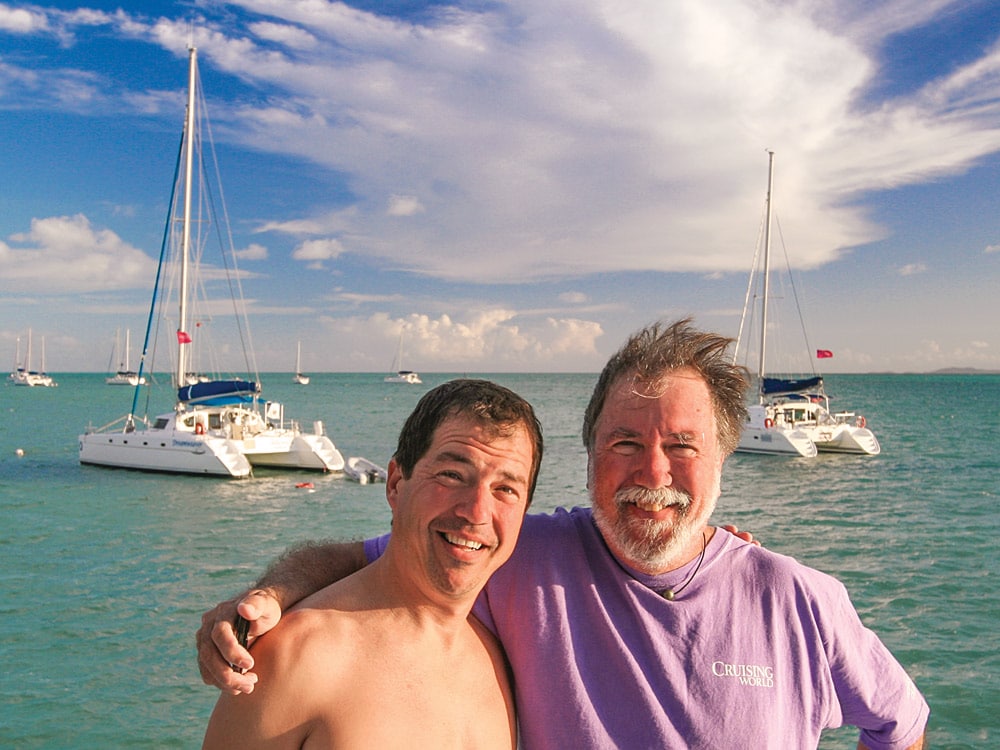
It is hard to beat the benign Lesser Antilles for first-time charters. I recommend the BVI, St. Maarten and the Grenadines, in that order. Then the tamer areas of the Med. And then Tahiti/Moorea/Bora Bora. After those, the sky is the limit, with New Zealand, Australia, Fiji, Tonga, New Caledonia, Thailand and the Philippines beckoning.
It’s time now to return to this buying-an-experience concept.
A boat’s a boat, but newlyweds in search of privacy, large family reunions, diving groups, club racers, fishermen, nudists and drinking clubs with a sailing problem will all benefit from slightly different craft and totally different anchorages and party styles.
I’m a confirmed monohuller, but I’d love to have a family reunion aboard a catamaran with a bunch of water toys. What fun we’d have belly-flopping for a week with our grandkids!
Honeymooners might, however, prefer a smaller shoal-draft vessel to get as far away from the distracting crowd as possible.
Fishermen might choose a more heavily powered craft than, say, club racers, who might enjoy the deepest-drafted, lightest, most weatherly vessel in the charter fleet.
Sailors interested in the evolution of West Indian sailing craft (that would be me, for sure) always gravitate to Anguilla, just north of St. Maarten, and Bequia, just south of St. Vincent, as well.
The last time my wife, Carolyn, and I were cruising the Med, we met a doctor from Austria who had flown into St. Vincent specifically to charter a particular model of Catana catamaran. He ultimately purchased a brand-new sistership.
That’s the beauty of bareboating: If you know the ropes, it can be the most fulfilling, most individually tailored vacation in a lifetime.
Cap’n Fatty wrote this issue’s On Watch while on watch aboard the Goodlanders’ Wauquiez ketch, Ganesh, somewhere in the Pacific between Panama and French Polynesia.

